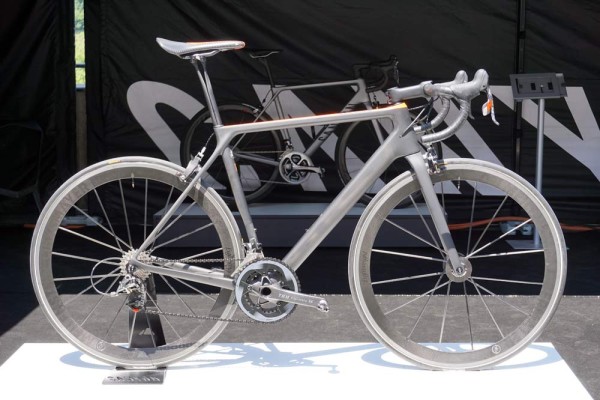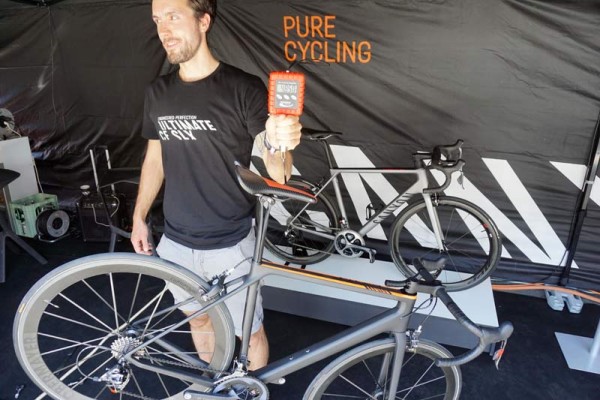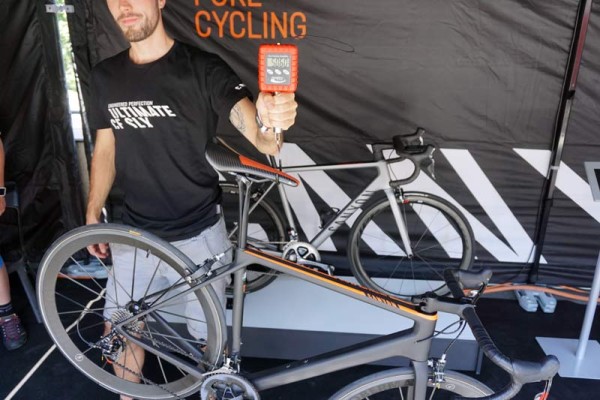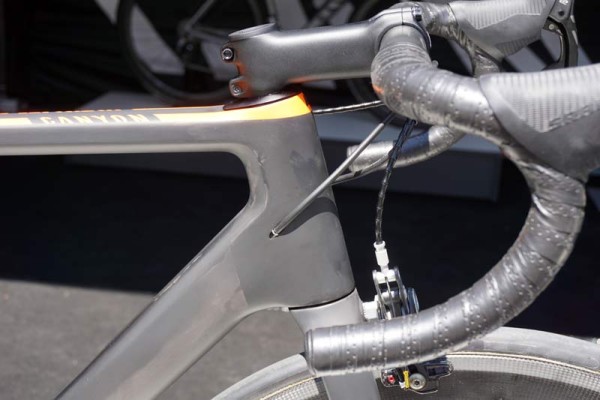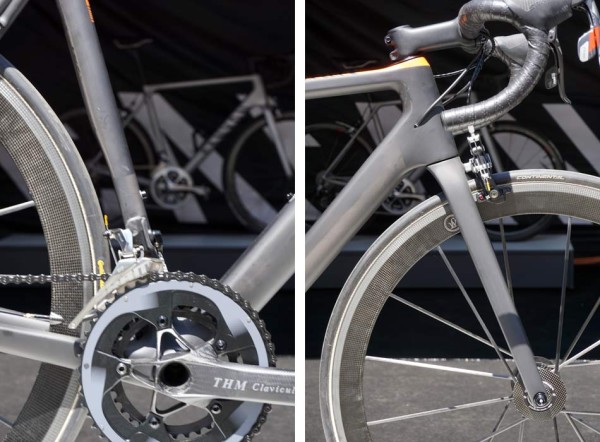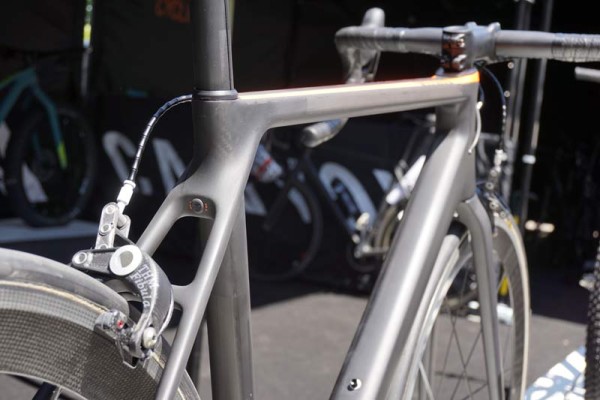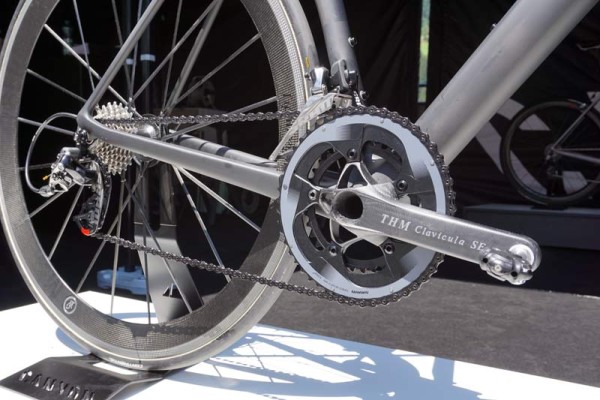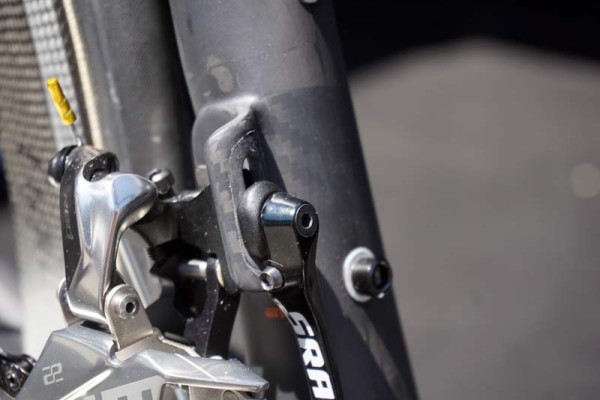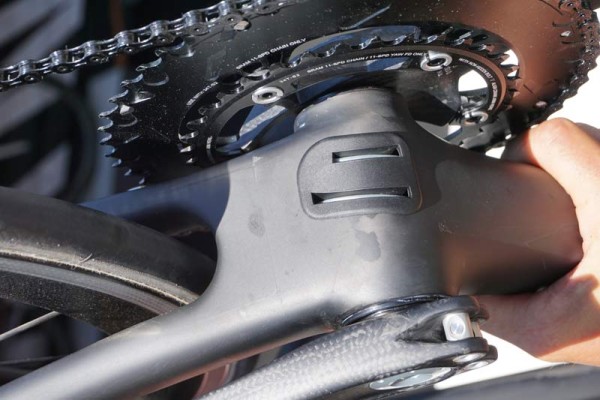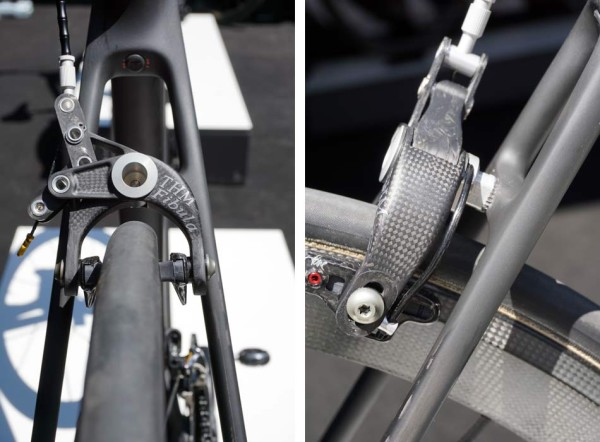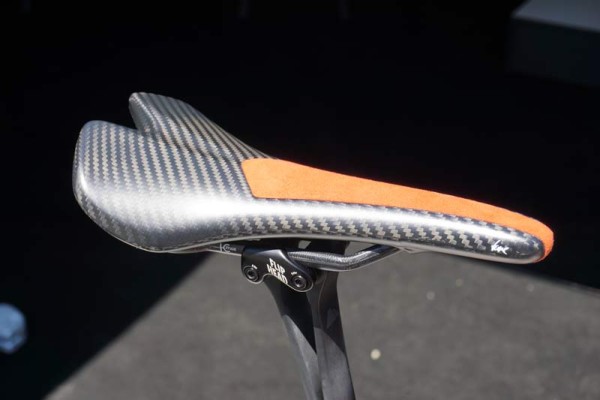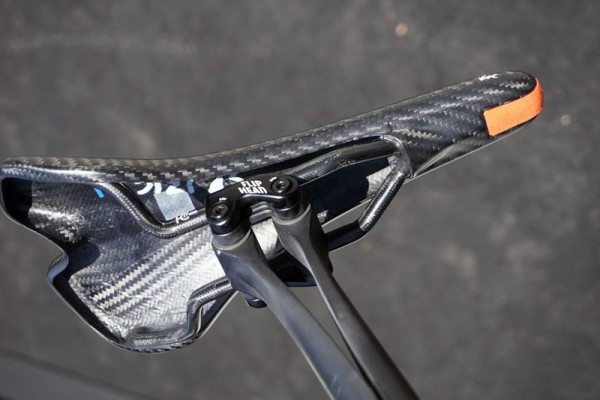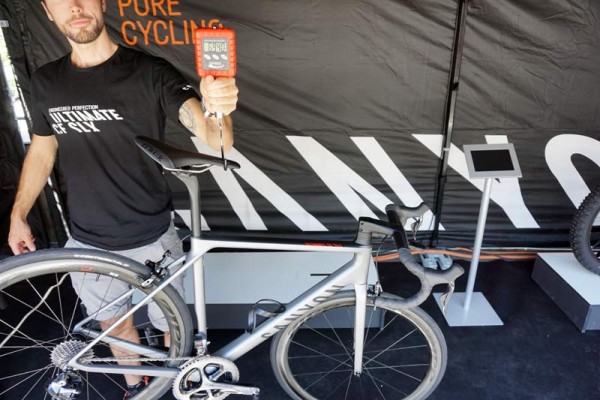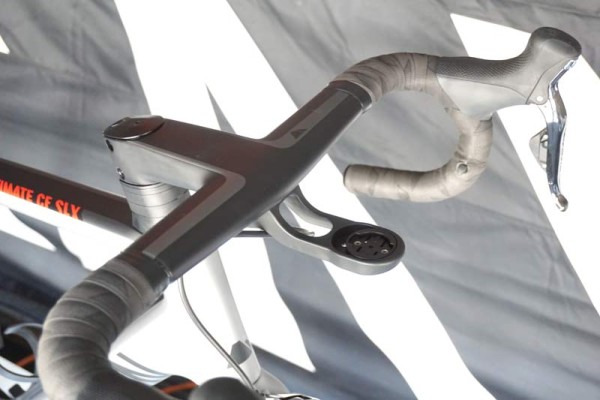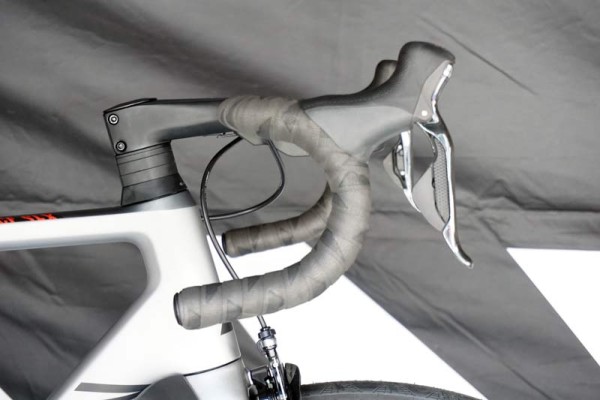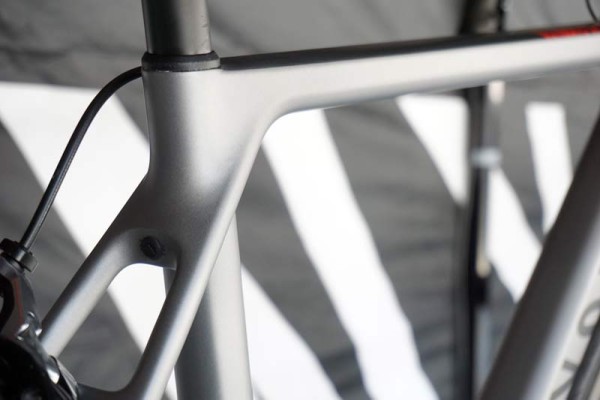Just last week, Canyon unveiled their all-new Ultimate CF SLX for Movistar to race in this year’s Tour de France. It introduced a new aerodynamic design to the already stiff, light and comfortable Ultimate heritage. Now, they’ve shown us their halo product, the Ultimate CF Evo.
Yes, the weight and the price are insane, but the madness is tempered with parts that they say makes the bike actually ridable on a daily basis with no compromise in performance or durability.
So, how can they do that and get a bike under 5kg?
The complete bike mostly as you’ll find it on showroom floors (as if one of these will ever just be sitting in your LBS) comes in at 4.85kg (10.69lb). Spec notes below explain what’s not stock here.
With a pair of steel spindle Speedplay pedals, the weight is still just 5.06kg (11.16lb).
The SLX frame weighs a claimed 780g with 295g fork. The Evo frame is substantially lighter at 665g (size medium), and 270g fork with steerer cut for a medium frame.
Even with the weight savings, they wanted to keep similar stiffness and comfort to the SLX. They saved weight by using different types of carbon, which were much more expensive.
The difference is a PAN based carbon in their regular Ultimate CE bikes versus a Pitch based high modulus fiber on the Ultimate, which has about 30% more carbon in the carbon fiber. That means it’s a more hi-mod frame, but there is other modulus fibers in there, too, so the frame won’t be too brittle.
All of Canyon’s forks and handlebars are checked in house by computer tomographic (CT) scan to ensure it’s laid up correctly, there are no gaps or delaminations. Normally, they only do it on their forks and handlebars, but since this frame pushes the limits of light weight, it also gets the CT scan check it before it goes out the door.
The seatpost clamp is completely hidden and resides about 6-7 cm below the top of the seat tube. That design allows an extra 6-7 cm of seatpost, which allows more total flex and better comfort. The threaded binder insert and bolt are titanium, which saves 4-5g over the steel parts used on the SLX. Water bottle bosses remain standard with alloy bolts.
Goal was to make a super light bike that could also be ridden everyday, hence the use of a standard SRAM chainring and cassette with KMC DLC Black chain. But they’ll have all black RED chainrings made for them to keep the stealthy look intact. The rest of the component spec mirrors that, saving weight where they can without giving up usability. Wheels are stiff, cockpit is stiff and comfy. So, you could make it a good bit lighter if you went absolutely nuts on wheels and components but you’d lose ridability.
The SLX and Evo models share the same molds, but the Evo uses a special insert to allow them to form an integrated carbon fiber front derailleur mount rather than the riveted alloy one. Savings: 6g.
Internal cable routing helps with aerodynamics even though it can sometimes add a few grams. They made up for it with the linked Jaguar cables for braking and lighter XEX housing for the shift cables.
Other parts include:
- 79g Tune saddle
- 275g THM Clavicula crank arms (without chainrings or bolts)
- Ceramic speed 60g BB that’s new and fits a Shimano pressfit 86.5 design with a 30mm axle
- Wheels have ceramic bearings to save 6g per wheel
- Tires are a special edition of Continental Podium TT with slightly less rubber to come in at 200g per tire, a bit less than regular versions. That does reduce their tread life by about 35%, but they say it doesn’t affect puncture resistance. The tires on this bike are the standard ones, so actual weight will be slightly less than what’s shown above.
- Canyon handlebar is 196g (42cm) and stem is 150g (110mm)
Things like Canyon’s flex seatpost aren’t the lightest out there, nor is their handlebar and stem (though they’re nothing to sneeze at). But using lighter, more chi-chi parts would have reduced comfort and stiffness, so they opted for the slightly heavier bits to keep the ridability theme going.
Retail will be €13,000 and it goes on pre-sale this fall, production starts in February 2016. Look for another ultralight spec concept on this frame to be announced at Eurobike, too.
For its part, the SLX is no slouch at 6.94kg (15.3lb) including Dura-Ace pedals, putting it just inside the UCI’s current legal minimum weight limit…though this one’s built with Zipp clinchers, so it’d be pretty easy to dip below that limit by swapping to tubulars.
Canyon’s one piece stem and handlebar also weigh slightly more than their individual parts because of the integrated Di2 junction box mount underneath (completely hidden from view unless you’re looking from the bottom up) and bolt holes for their out-front Garmin mount. Note the sprinter’s Di2 switches poking outta the bar tape.
The stem’s shape integrates with custom headset cap and spacers.
Check out more on the SLX and team bikes here.
